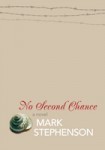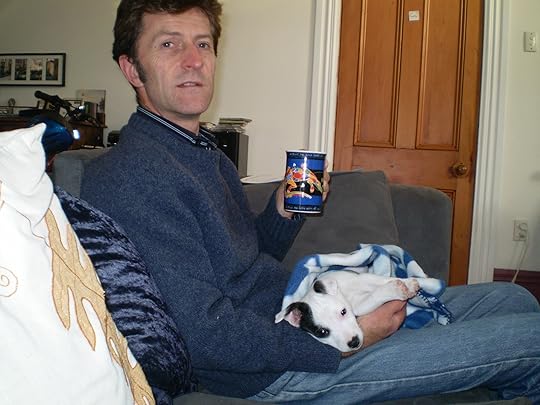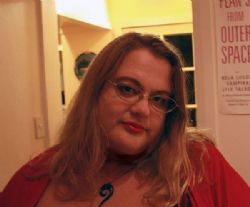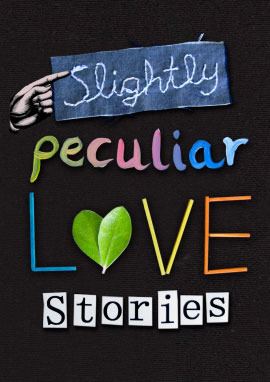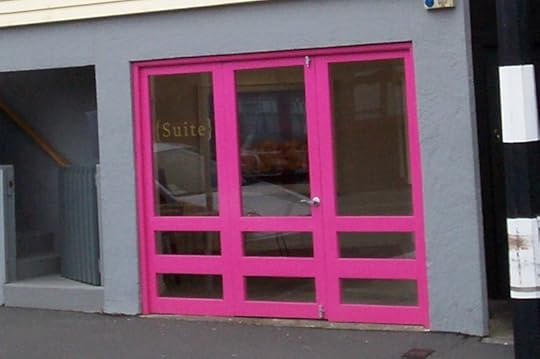Janis Freegard's Blog, page 24
September 28, 2011
Interview with Mark Stephenson – No Second Chance
Mark Stephenson is a Wellington writer whose first novel No Second Chance has just been published by Steele Roberts. No Second Chance is the story of Anna, who arrives in Wellington in 1947 as a survivor of the holocaust. As well as being a story of survival, courage and betrayal, it's also a story of love and hope. Anna forges a new life in a new place, but the past is always with her.
Mark grew up in the United Kingdom but moved to New Zealand in 1985 to work as a junior doctor in Invercargill. He has lived in Wellington since 1989 where he works as a GP and writes part time. He lives with his partner, a daughter and two dogs. Mark's short stories have been published in JAAM, Takahe, New Idea, Viola Beadleton's Compendium of Seriously Silly and Astoundingly Amazing Stories and Washington Square.
Recently I interviewed Mark about his beautifully written new novel, and about writing generally.
Mark, when I first met you, you were writing short stories. What led you to write a longer work?
Yeah, this novel started life as a short story, which was published in Takahe way back yonks ago. For some reason I just kept thinking about the characters and the reasons behind their actions. I gradually filled in the details of their lives and fitted them into a historical context, which wasn't there in the original story, or not so much of it. Then I started thinking about the next generation, and the next one after that, and the consequences for them as well. So it became a story of how historical events can break apart a life, and a family, and eventually how the characters might come back together again.
What was different about writing a novel, compared to writing short stories?
It took a lot longer…!
But seriously, it's easier in a way as long as you can stick to the task. You can develop characters and themes and plot along the way whereas in a short story it all has to be done in a few sentences, or words even. A short story is way easier to finish though.
You've chosen a very challenging subject. What made you decide to write Anna's story? Is she based on a real person?
She is not based on a real person but some of the events I've written about have certainly happened to people. The situation and conditions in the camps are real but the characters and the way they interact in the novel are imaginary. I've been interested in those stories of survival since I was a teenager for some reason and have read some historical accounts. Many survivors keep their stories to themselves till they are much older, and some things probably go with them to the grave. I have often wondered what it would be like to survive, come back to a 'normal' life and how your mind would deal with it.
One of the most dramatic events in the book occurs in New Zealand, late in Anna's life. This is based on an actual happening that occurred not far from here. It set me thinking… why would anybody do that? That's really where the story came from – I started to fill in the gaps.
Do you have a regular writing routine? How do you juggle writing with your work as a GP?
Well, kind of. I have a regular bit of time off in the week when I write. Sometimes I spend most of it staring at the blank screen.
You held an NZSA mentorship while you were writing No Second Chance. How do you think that helped you?
It helped me a lot, basically by getting a lot of feedback on the text and how I was writing, seeing the recurring faults in my writing. I realised I had still a lot of work to do on the manuscript even though I thought it was already well drafted. I learnt a great deal. My mentor was encouraging while being honest about the bad bits, and there always are bad bits. She also praised the good bits, which I enjoyed more, strangely enough.
What are your writing plans now? Will you stick to novels?
At the moment I'm sticking to novels. I've written a draft of another one, possibly a second draft. It's very different, though also historical, this one is set in sixteenth century Aotearoa before European contact and has a teenage boy as protagonist.
Finally, do you have any advice for first-time novellists?
I tend to think a lot and write little. I advise them to do the opposite.
No Second Chance can be bought from Steele Roberts and Unity Books, or any bookseller will order it for you if you ask.








September 22, 2011
Spec Fic Poem for Spec Fic Blogging Week
This week is Spec Fic blogging week, organised by the Speculative Fiction Writers of New Zealand. Here then, is a science fiction poem I wrote:
lovesnog in blue
I love the cool smoothness
of your tentacles
your triple eyes of Terran blue
let me fondle your mandibles
palpate your maxillae
under the idling moons
through the singing times
through the trembling times
through the wildwinterstorm times
I will love you with
my strobilating polyps
my many radulae of Terran blue
Janis Freegard
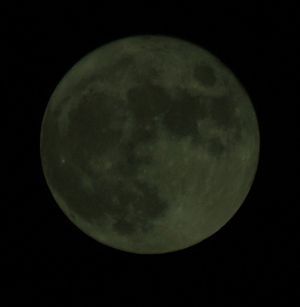
Image via Wikipedia








September 18, 2011
The Continuing Adventures of Alice Spider

Image via Wikipedia
A quick update on Alice:
Alice Spider is a character who's been haunting my poetry since I was about eighteen. She's appeared in prose poem sequences in Turbine and AUP New Poets 3 (Auckland University Press) and danced her way through JAAM 28. Now Alice has infiltrated the latest issue of Anomalous Press, alongside many entertaining international writers. Anomalous Press offers audio alongside its text. Downloadable versions are coming soon, but in the meantime, it's all online.








September 5, 2011
Tuesday Poem – Thread of Pearls by Lady Ise
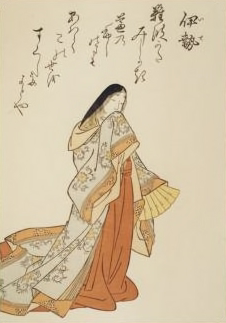
Image via Wikipedia
Thread of Pearls
Hanging from the branches
Of a green willow tree,
The spring rain
Is a
Thread of pearls.
Lady Ise (Ise no miyasudokoro, c. 875 – c. 938) was a Japanese poet in the Imperial court.








August 22, 2011
Tuesday Poem – Flowering Room, by Saradha Koirala
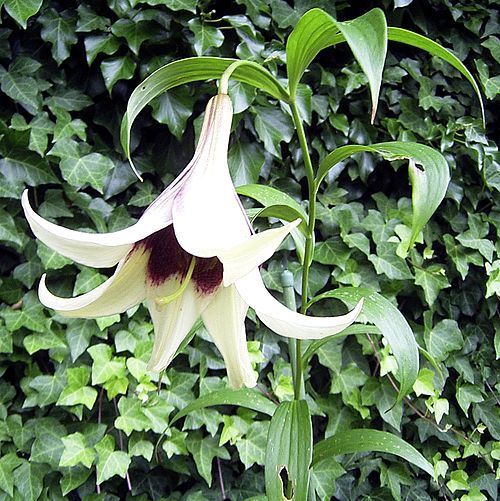
Lilium Nepalense – Photo by Denis Barthel
Flowering Room
In the lounge your angles
were acute and wrong.
You bent too slowly
towards the slivers of light
you could steal early morning
if I left the curtains wide.
On the fridge you learnt
stretches and poses,
salutes to the sun
which rose and rose
unobstructed and sure
until early afternoon.
When the Venetian blind
crashed down one evening,
its slats and strings so tangled
and dinners upon dinners
layered sticky on its once-white,
I propped it in the laundry
and you offered up
a strange bright lily
from your warm-damp soil
and butterflying leaves.
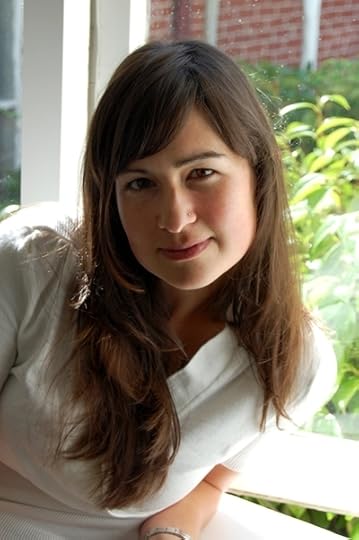
Saradha Koirala
Saradha Koirala is a Wellington-based poet and English teacher. This lovely poem comes from her collection Wit of the Staircase, published by Steele Roberts in 2009. The poem reminds me of a cactus I've had for decades, which has only flowered once – in a sunroom in Mt Vic. But it also makes me think of other types of blossoming – how anyone might flower in the right conditions.Click on the quill for more Tuesday poems.








August 8, 2011
Eye To The Telescope

Yayoi Kusama. Singapore Biennale. Image via Wikipedia
The second issue of the online journal of speculative poetry Eye to the Telescope, featuring Australian and New Zealand poets, is now live. It's been edited by Wellington writer Tim Jones and contains my poem 'Yayoi Kusama Goes to Iceland'.
I'm in excellent company: other poets in the journal include Raewyn Alexander, Helen Rickerby, Stephen Oliver, Laurice Gilbert, David Reiter, Cy Matthews, Catherine Fitchett, Alicia Ponder and Joe Dolce (better known for the song 'Shaddup You Face').








July 29, 2011
Poetry & Gender in New Zealand Publishing Part 2
Last year, I posted about a little survey I'd undertaken of publishers' websites. I looked at the gender of poets published in 2009 by AUP, VUP, Steele Roberts, Seraph Press, Earl of Seacliffe Workshop, Cape Catley, Titus Books and OUP (the ones that sprang to mind). I was interested to discover that, of the 31 books I found, 18 (58%) were by women and 13 (42%) by men.
Well. Subsequently, I discovered that the Journal of Commonwealth Literature very conveniently publishes (amongst other things) an annual round-up of all the poetry books published in New Zealand during the year. This included publishers I hadn't been aware of at the time, such as Soapbox Press. Thanks to the Journal of Commonwealth Literature, I was able to get a much fuller picture.
The real balance was the opposite to what I'd found: of 74 poetry books published in 2009, 42 (57%) were by men and 32 (43%) were by women. Most of the presses I'd inadvertently excluded were small presses publishing one or two volumes apiece. However, one publisher (Kilmog Press, which makes truly beautiful handmade books) published 12 volumes in 2009 – surpassing all other publishers on the list, for which they are to be commended. Only one of these books was by a woman, though, which skewed the results significantly. (Maybe Kilmog Press will have an entirely different profile for 2010, but the results aren't available yet, so we will just have to wait and see.)
Focusing on the three major poetry publishers in New Zealand (with 8 books apiece): Auckland University Press and Victoria University Press each published 5 women and 3 men; and Steele Roberts had 4 of each.
So how does all this stack up against the previous year? 2008 looks a little different for the big three: AUP published 2 women and 6 men, Steele Roberts 5 women and 7 men; VUP 3 of each. But if those two years are typical, the gender balance looks as though it might even out over time.
The other publisher with significant numbers in 2008 was the Earl of Seacliff Art Workshop (1 woman, 4 men), followed by Headworx (1 woman, 2 men & 1 joint publication by a woman and a man); Original Books (2 of each) and Soapbox Press (1 woman, 3 men). The grand total for 2008 was 32 books by women (36%) and 55 by men (63%), with the remaining 1% the joint publication (by Meg Campbell and Alistair Te Ariki Campbell).
What can we conclude from this? Female poets are well represented overall with the major publishers; male poets seem somewhat over-represented with the smaller presses. Is this because small presses are more likely to be run by men, who prefer poetry by men? Are men more confident about putting together a collection and submitting it? Are women more likely to do MAs in Creative Writing* and therefore more likely to approach a university press? Who knows. You can expect another exciting instalment of this next time I get my spreadsheets going.
* I rather think they are, which raises another interesting question – why? Do male poets think they know it all already? Are female poets more open to the idea that they might still have a lot to learn? Are men more likely to take the alternative, small press route? I think there's a thesis in here somewhere and if someone would like to pay my mortgage for the next few years, I'd be happy to take it on….








July 21, 2011
National Poetry Day Poem – Stranded in Paradise, by Helen Rickerby
When we hit tarseal again
I feel like the island
had tipped up
to send us rolling down-
hill heading for home
but not even halfway
between the end of the earth and Kaitaia
we hear a noise
and a clunk, and a hiss
We stop to check
It's flat
Up ahead are houses
Cars rush past like flies
We trudge along the verge
The sun has already melted the tar
my Paihia jandals already ruined
Intimidated by the large white house
we try the neighbours
with the cars and the dogs
'No landline,' they say, 'try the white house'
The white house peers down from its hill
the driveway is two lines
of white stones
I let you go first
They don't ask us into the house
but bring the phone out
They tell us they once visitedWellington
like another country, this mythic south
We phone the AA and return to our car
I am homesick
for the first time
In the hours we spend waiting
the sun climbs higher and hotter
We sit in the car, there is nowhere else
each passing vehicle shakes us with jealousy
When the AA man comes
pulled from his family, pulled from Kaitaia
we pretend to not be embarrassed
that we can't fix it ourselves
City folk, we can't help it
"Stranded in Paradise" is from Helen Rickerby's sequence of poems Heading North, published in handbound volumes by Otago publisher Kilmog Press. It's a beautiful book, inside and out. The poems follow a couple travelling up the North Island to Cape Reinga and back – part road trip, part love story, with the presence of a bovine goddess in the background. In this poem, I especially like the idea of the island tipping people up and rolling them home again.
Helen Rickerby is the author of two other collections of poetry: Abstract Internal Furniture (2001) and My Iron Spine (2008) (both with HeadworX). She is also co-managing editor of JAAM literary magazine and runs Seraph Press, a boutique poetry publisher. Helen lives in Wellington, works as a web editor and blogs at Winged Ink.
Happy Poetry Day, everyone! There are more poems at the Tuesday Poem hub.








July 20, 2011
Slightly Peculiar Love Stories
New Zealand e-publisher Rosa Mira Books has just released "Slightly Peculiar Love Stories", an anthology of 26 love stories. The writers come from New Zealand, Israel, Hong Kong, Argentina and Athens, the UK and the US and include Tim Jones, Tina Makereti, Maxine Alterio, Claire Beynon, Bryan Walpert, Sue Wootton and Craig Cliff. My own contribution is my short story "Mill" which won the BNZ Katherine Mansfield Award in 2001. I'm delighted to be in this beautiful anthology, in such fine company. Congratulations to editor Penelope Todd, who has done a wonderful job.








July 11, 2011
Explosions
Suite Gallery (which recently moved from Newtown to Cuba St) has a cute little gallery space in Oriental Bay, just opposite the boat sheds & Martin Bosley. It used to be a garage. It looks like this:
If you're in Wellington, you have until 17th July to get down there to see some really good photos of explosions by my friend Geoff Short. If you like staring into flames, finding shapes in clouds, or setting fire to things, you will like these. They've been on display in Paris, Beijing, Switzerland, etc and now they have arrived in Wellington just in time to warm you up on a cold winter's night. If the gallery's closed, you can still get a good view through the window.
One of them looks like this, only much bigger, and consequently even more exuberant:

Untitled Explosion, Geoffrey H Short
Go and have a look.









